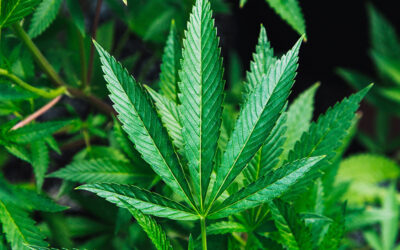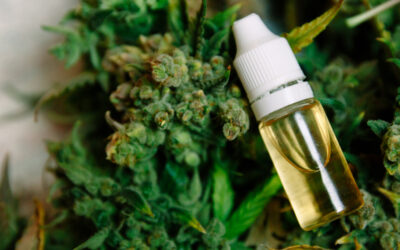The following information is presented for educational purposes only. Medical Marijuana Inc. provides this information to provide an understanding of the potential applications of cannabinoids. Links to third party websites do not constitute an endorsement of these organizations by Medical Marijuana Inc. and none should be inferred.
Even though cannabis is non-toxic and offers medical benefits for a seemingly never ending list of ailments, not everyone looking for relief wants to light up a joint or munch down a pot brownie. Thankfully, there is another way – topicals.
At this point, you may have come across topicals online or in your local dispensary and found yourself asking why you would put cannabis on the outside of your body? As one of the fastest growing ways of using cannabinoids for health, topicals include a wide classification of cannabis infused products intended for external use.
Although clinical research into the transdermal application of cannabinoids is lacking, anecdotal evidence abounds in regards to the effectiveness of cannabis topicals. This then raises an important question: do cannabis topicals really work or are they just snake-oil?
What Are Cannabis Topicals?
As more and more research is conducted on cannabinoids like THC and CBD and the endocannabinoid system, newer ways to use cannabinoid based products are being developed, including the use of one of our largest and most outward of organs — our skin.
Cannabis topicals include balms, salves, lotions, and oils that are infused with active cannabinoids and are applied to and absorbed directly through your skin. Topicals have grown in popularity in recent years, with cannabinoids like THC and CBD making their way into everything from lip balm and massage oils to cosmetics and sexual lubricants.
How Do Topicals Work?
Rather than smoking marijuana or ingesting it orally, which will affect the whole body and can take up to 2 hours or more to fully experience the effects, the topical application of cannabinoids allows them to be absorbed directly into the affected area for faster and more focused relief. This minimally invasive method for medical cannabis use often serves as a first point of contact between curious consumers and the medical cannabis industry. Reluctant to ingest or smoke the raw cannabis plant, new users may be more willing to try external applications.
Topicals are non-psychoactive, so they are often popular among patients who want the therapeutic effects of cannabis but not the “high”. This non-psychoactivity is because the cannabinoids in these topicals bind to CB2 receptors near the skin, activating the endocannabinoid system, and are never absorbed into the bloodstream. Because human skin has a low absorption rate for these cannabinoids, coverage and dose need to be large enough to overcome this barrier (Challapalli & Stinchcomb, 2002). This is why most cannabis topicals suggest applying “liberally” to the affected location.
However, CBN and CBD are more permeable to the skin than THC and are more likely to stimulate the CB2 cannabinoid receptors, making them the popular choice for the manufacture of cannabis topicals (Jorge et al., 2011). Since CBD contents are much higher in commercial hemp than in marijuana, hemp is a more viable and less toxic source of CBD for use in topicals.
What Should I Use Topicals For?
It has been well documented that cannabinoids are effective in the management of difficult and chronic pain due to their interaction with the endocannabinoid system (Russo, 2008). However, little research has been done into the application of these cannabinoids transdermally. The medical literature that has been published indicates that, because cannabis infused salves and balms are non-psychoactive and affect only the region to which they are applied, they are the most effective application of cannabinoids for localized relief from pain, tension, muscle ache, and inflammation.
Although topicals containing high doses of CBD are best when used for physical pain, the topical use of a combination of THC and CBD has been reported as effective against the “central pain of multiple sclerosis” (Jorge et al., 2011). Topical applications of cannabinoids are also effective at relieving the chronic pain from arthritis and rheumatism.
Athletes have been exploring the topical use of cannabis for some time because it offers physical relief without the dangerous side effects of prescription painkillers, it doesn’t leave the user too intoxicated to perform at their peak, and it isn’t detectable on drug tests like those performed by the World Anti-doping Agency, the largest drug testing agency for sports in the world.
The damage to the human body from athletics and exercise comes in various forms, from the oxidation of cells to the subtle tearing of the muscles. The antioxidant properties of cannabinoids can help prevent this oxidation and their analgesic and anti-inflammatory characteristics can assist with the soreness and pain of overexertion. Additional options for athletes to fight their physical pain exist with massages using cannabis infused products or a soak in a CBD infused bath.
A 2007 study completed by an international research group detailed how “enhanced activation of the endocannabinoid system” helps regulate immune responses in the skin, meaning topicals may be useful in treatment of skin allergies (Gaffal et al., 2013). Topical applications of cannabinoids also benefit the skin thanks to their anti-inflammatory, antibacterial, and immunity-modulating properties. Burns, rashes, eczema, psoriasis, and skin infections can all be relieved with the analgesic and antibacterial properties exhibited by cannabinoids when used in topicals (Hebrew Univ. of Jerusalem, 2016).
Cannabis topicals then can be effectively applied for a variety of ailments near the skin for a more focused and faster acting relief than when cannabinoids are ingested. Visit the Education section of our website for more information on the ways cannabinoids can benefit you.
References:
Challapalli PV, Stinchcomb AL. In vitro experiment optimization for measuring tetrahydrocannabinol skin permeation. Int J Pharm. 2002;241:329–39.
Gaffal E, Cron M, Glodde N, Tuting T. Anti-inflammatory activity of topical THC in DNFB-mediated mouse allergic contact dermatitis independent of CB1 and CB2 receptors. Allergy 2013; 68: 994–1000.
The Hebrew University of Jerusalem. (2007, August 17). Cannabis May Help Alleviate Allergic Skin Disease. ScienceDaily. Retrieved April 7, 2016 from www.sciencedaily.com/releases/2007/08/070816094649.htm
Jorge LL, Feres CC, Teles VE. Topical preparations for pain relief: efficacy and patient adherence. Journal of Pain Research. 2011;4:11-24. doi:10.2147/JPR.S9492.
Russo EB. Cannabinoids in the management of difficult to treat pain. Therapeutics and Clinical Risk Management. 2008;4(1):245-259.





